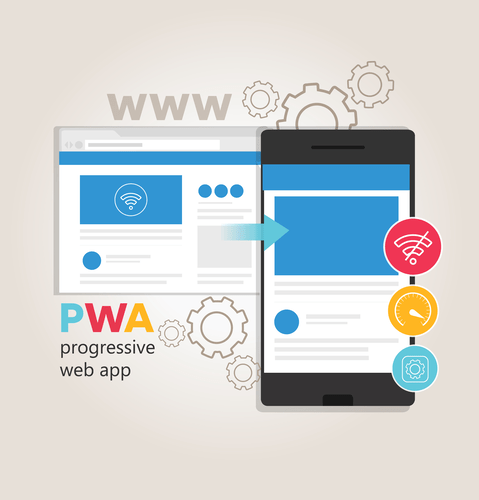Enables the client to prioritize different features, allowing the team to ensure maximum project value. Thanks to this, clients have improved transparency, and therefore a clearer understanding of the phases of the project is present. These types of teams provide the best designs, requirements, and architectures. Focus on a shorter timescale, and ensure products are delivered frequently. The customer needs to be satisfied with the quick delivery of the product. Reflecting regularly and adapting quickly to customer and employee feedback are agile essentials any purported practitioner can agree on.

These minor issues can be tackled before they escalate, creating an effective risk mitigation process and giving the project a greater chance of success. Before we begin, you can kick-start your Agile journey right now with Wrike’s comprehensive Agile template for organizing backlogs and planning effective sprints. The main benefit of iterative work is that less work gets wasted. That is, when something changes about the project, the amount of re-work that must be done is minimized. In other words, teams don’t have to go too far down one path, only to find out they must backtrack and start all over again.
Superior Product
Being adaptable means teams can deliver consistently and manage clients’ changing requirements effectively. On an Agile project, the team does not attempt to develop all features at once. Instead, the team assigns a smaller subset of features to each sprint.

In contrast, Scrum is a specific Agile approach to assist a project. It focuses on people and their interactions, rather than on tools and processes. Aimed to streamline processes and improve optimization, Crystal works on the principle that projects are unique and dynamic.
Encourage collaboration
The key to doing agile right is embracing a mindset of continuous improvement. Experiment with different practices and have open, honest discussions about them with your team. But it’s not just a numbers game—first and foremost, it’s about people. As described by the Agile Manifesto, authentic human interactions are more important than rigid processes. Collaborating with customers and teammates is more important than predefined arrangements. And delivering a working solution to the customer’s problem is more important than hyper-detailed documentation.
The importance of Stakeholders and Practice Leads in agile marketing – MarTech
The importance of Stakeholders and Practice Leads in agile marketing.
Posted: Tue, 16 May 2023 17:31:55 GMT [source]
Furthermore, it is based on an empirical approach, which allows the method to make room for changes as your project grows. Since all the Sprint designs in the agile have a fixed duration to them, the cost is easier to predict. However, the work is limited to the team members and their fixed schedules. Once you combine these efforts with the overall estimate that is dedicated for each sprint, you will come across an efficient approximation of overall work and its cost. Using such methodologies and benefits agile provides you with will enable you to achieve satisfactory results for your customers. When it comes to the team members and their management, Agile methodologies allow transparency and efficient feedback throughout the project.
Customized Company Solutions
One of the main benefits of delivering frequently is to get feedback to make sure that you’re on the right track to make sure that you’re actually building a solution that the customers need. However, Agile divides the project in short sprints that are both manageable and flexible enough to allow the team to implement changes on short notice. This unmatched flexibility is one of the top reasons why dynamic organizations prefer to use Agile in their project. This is because it requires a different way of thinking about project management. Kanban can be more difficult to implement than agile development.
- And although, you planned everything out, main parts can sometimes accidentally be omitted, putting a dent into your thought out planning.
- Some of them immediately loved the idea of implementing it; others had different priorities and decided to hold off.
- An agile team unites under a shared vision, then brings it to life the way they know is best.
- Those development approaches were heavy and the group was frustrated and motivated to come up with something better.
- Learn how the scrum methodology impacts traditional project management.
- The team works as a close-knit unit by discussing the challenges and the potential solutions.
Not only that, they get to see a working product at the end of each sprint and will be pleased that their team can deliver releases more quickly and frequently. Waterfall projects revolve around lengthy project cycles that make it difficult techniques and practices for product backlog for teams to predict a release date accurately. Agile iterations happen in time-boxed sprints that result in a working product at each release. Thus, the product owner knows that they will get new features at the end of every sprint.
Understand Where Agile Does or Does Not Work
The main one being a lack of consensus on the term’s actual definition. The Agile methodology was first developed in 2001 as a response to the failings of traditional project management, which relied too heavily on paperwork and upfront planning. The Agile approach advocates for a more flexible and adaptive way of working, allowing for changes and improvements to be made as the project progresses.

An early start and development process that happens as per schedule gives the benefits early. The product outcome at the end of the sprint is outstanding since testing is an integral part of the sprint. The client participates in the entire development cycle, and all changes are made on time. In traditional methodology, projects have a lengthy project cycle, making it difficult to decide a delivery date.
Enhanced Flexibility
For Agile software development to be successful, it is important for the product owner to be engaged throughout the process. Unfortunately, that level of engagement doesn’t happen in waterfall projects. In a waterfall project, stakeholders aren’t inclined to participate past the requirements gathering phase and only re-engage during user acceptance testing . Unlike waterfall, product owners are very active participants in Agile sprints. This level of involvement gives them a sense of ownership that encourages further engagement. It started in 2001 with the Agile manifesto and was originally made for software development.
There are at least a dozen agile innovation methodologies, which share values and principles but differ in their emphases. Here are three of the most popular https://globalcloudteam.com/ forms and the contexts in which each works best. What if a company could achieve positive returns with 50% more of its new-product introductions?
What is the most important benefit of Agile?
Soaring production costs and customer churn affect your business profitability. Customer satisfaction ensures customer delight, which is a precursor for customer retention. Traditional project methodologies had longer development cycles which led to costs overreaching the budget. All these data points to the fact that Agile is a holy framework for driving organizational change.
No comment yet, add your voice below!